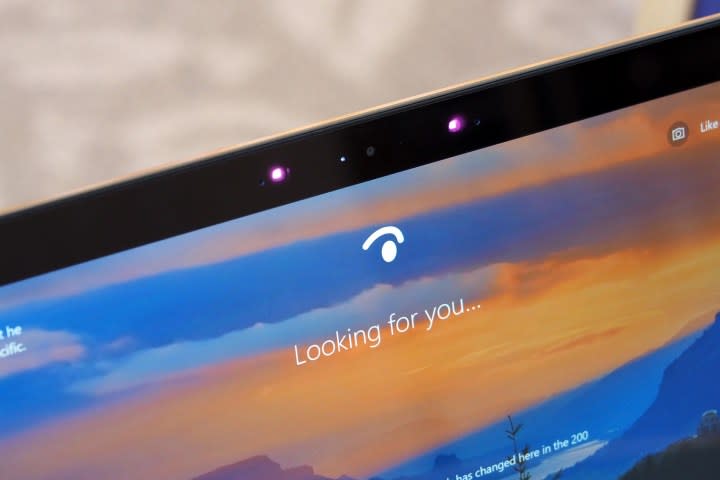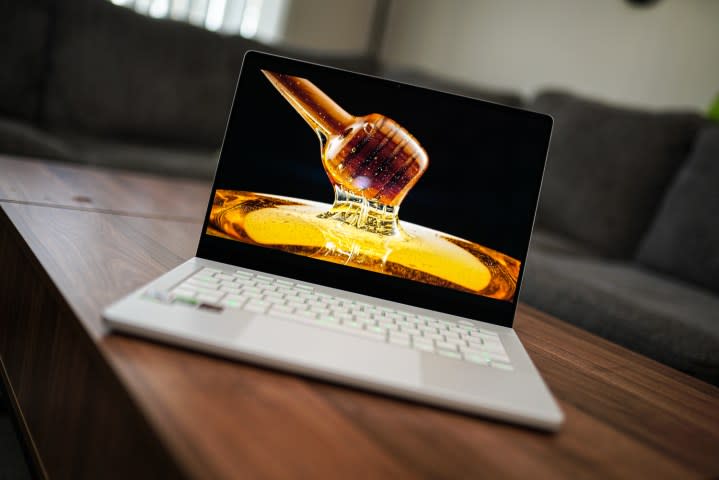Apple’s MacBook lineup has exploded over the last several years, with its Silicon chipsets offering class-leading performance and efficiency. The MacBook Pro, in particular, is faster than many Windows laptops, longer-lasting than most, and has an excellent mini-LED display. There are many good reasons to choose a MacBook over a Windows laptop in today’s market.
But all isn’t lost for the Windows platform. Even aside from the upcoming Snapdragon X Elite laptops that look to be competitive, there are still some more basic features that you can only get on a Windows laptop at the moment. Here are the four that I keep coming back to.
Windows Hello

Modern MacBooks have Touch ID, which uses a fingerprint reader to enable logging in and authenticating such things as authorizing purchases and entering credentials in Safari. It works well and is highly secure.
However, Microsoft took the concept a step further with Windows Hello. This feature supports fingerprint readers as well, but it extends the paradigm to on-device PINs and facial recognition. Yes, that’s right. Many Windows laptops feature infrared cameras that can map a user’s face and use that to log in. And all methods are backed by a Trusted Platform Module (TPM) that uses a cryptographic processor to keep everything secure.
Apple has its own facial recognition system, Face ID, that it uses in iPhones and iPads. By some measures, Apple’s technology is even better. But until Face ID makes its way to MacBooks, Windows laptops will offer a different and literally hands-off way to sign in quickly and securely.
OLED panels


OLED displays offer several benefits over the best that MacBooks have to offer. OLED has wider and more accurate colors, to begin with, as well as the highest contrast. Apple’s most competitive displays are the mini-LED panels on modern MacBook Pros, and those feature higher brightness and better high dynamic range (HDR) support. But they can’t compare to OLED’s inky blacks and bright, dynamic, and accurate colors.
Maybe the best thing about Windows laptops and OLED displays is that the technology is available on very affordable machines. You can buy a Windows laptop like the excellent Asus Zenbook 14 OLED Q425 for less than $1,000, with fast processors and plenty of RAM and storage. To get Apple’s best displays, you have to spend $1,500 or more.
OLED also offers faster response times. While Apple’s mini-LED displays go up to 120Hz, some OLED displays run at even faster refresh rates, but with ultra-low response times to match. That means you won’t see any ghosting, especially when gaming. Apple’s mini-LED displays (like all examples of the technology) can also suffer from minor “blooming” in bright scenes, and while it’s not as much of an issue with the newest panels, OLED doesn’t have the issue at all.
Overall, OLED is better technology for most people, and Apple agrees — it adopted tandem OLED technology in the new iPad Pro that achieves the same brightness as mini-LED with all the other advantages of OLED. That technology will make its way to MacBooks eventually, maybe even in the next generation, but for now, Windows laptops have the advantage.
Gaming


Speaking of gaming, this is the area where Windows arguably has the most significant advantage. Apple’s M3 chipset introduced various enhancements to the integrated GPU functionality, including hardware ray tracing and mesh shading, as well as Apple’s new Dynamic Caching, which aims to optimize memory allocation. That, combined with the sheer speed of the new GPU cores, makes the M3 Pro and the M3 Max, in particular, fast enough for modern titles.
The problem is, there still aren’t enough native games that can take advantage of all that power. The number of AAA titles that run natively on the Mac can likely be counted on both hands, and that severely limits the MacBook as a gaming platform. This is an area of growth, yes, but there’s a long way to go.
Windows doesn’t have that problem. Every new PC gaming title is available on Windows, naturally. And, Windows gaming laptops can equip up to the incredibly fast Nvidia GeForce RTX 4090 mobile GPU, which is still significantly faster than Apple’s best. Throw in a wider range of displays that run at insanely high refresh rates and low response times, including some spectacular OLED panels, and that makes the Windows laptop another thing entirely for gamers.
Serious gamers should buy a Windows laptop, full stop. Yes, the MacBook Pro will offer better battery life, but if gaming is important to you, then Windows is the only way to go.
Touchscreens


Apple has the iPhone and iPad lineup with touchscreens, but it’s steadfastly refused to add touch to MacBooks. Apple’s argument is that touchscreens are ergonomically flawed in that we’re not built to hold our hands up to a laptop display. That’s a silly argument, though, because offering a touchscreen doesn’t mean abandoning a touchpad or mouse. Touch is a secondary input method on a laptop, not a primary one — at least when it comes to clamshell use.
On the other hand, touchscreens are a staple among Windows laptops. They’re standard on many and optional on even more. And of course, you can buy Windows 2-in-1s in either detachable tablet or convertible formats, which offer iPad-like touch experiences.
I like touchscreens for a variety of reasons. They’re great for tapping the occasional pop-up button, and I like to rest my arm along the edge of a Windows laptop and use my thumb to scroll through long webpages and other documents. I do that a lot, and it’s incredibly comfortable and arguably more ergonomic than using a touchpad or mouse. And sharing a screen with someone is a lot easier when they can reach over and do things rather than trying to shoehorn into touchpad position or steal your mouse.
Maybe one day Apple will overcome its reluctance to offer touchscreens on MacBooks, and maybe it will even offer a 2-in-1 machine. Neither is guaranteed, however, or perhaps even likely. So, touchscreens are one advantage that Windows laptops might retain forever.
Source Agencies

